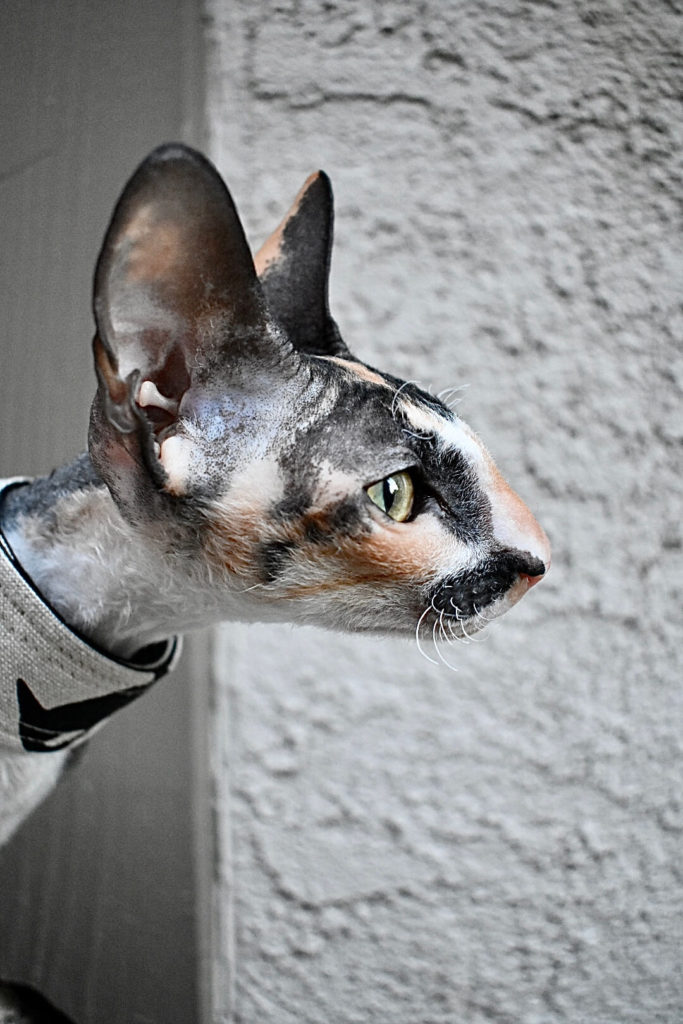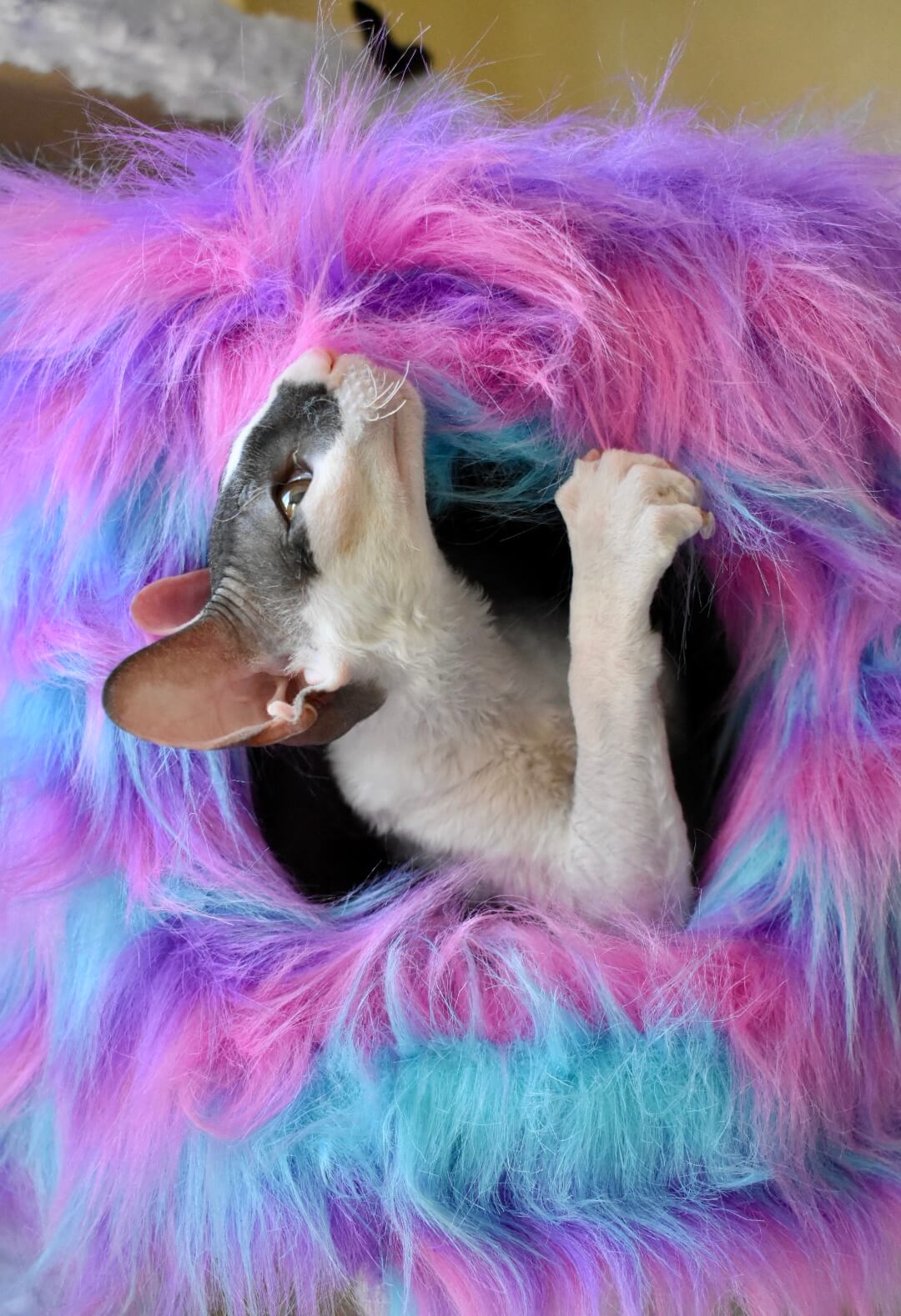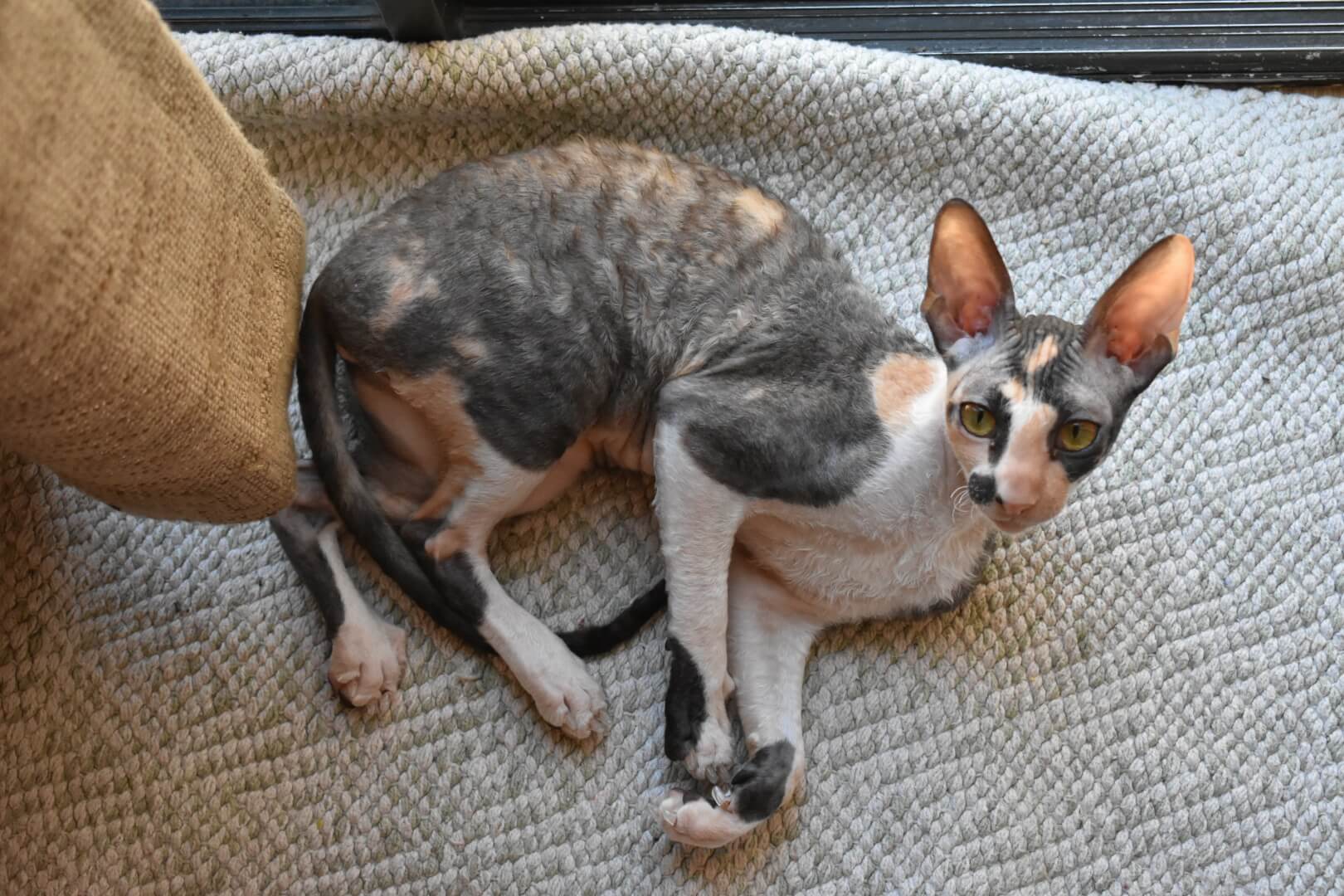How to Care for CRX
One of the many benefits of owning a Cornish Rex cat is how low maintenance their care can be.
Keep in mind that because of their lightweight coats, Cornish Rex will thrive as indoor cats or in warm environments. Their favorite spots will often be the warmest areas of the home.
Cornish Rex’s high energy make’s it one of the most entertaining and interactive breeds you can acquire. They are avid climbers and agile runners, which should be considered by any potential Cornish Rex owner. An ideal home for Cornish Rex will have plenty of space, access to toys, and ample places to hide and play.
If you are interested in owning a Matkja Cornish Rex, please be sure to do thorough research on the breed prior to reaching out. We, at Matjka Cornish Rex Cattery, take special care to only consider qualified potential owners. This helps ensure that our kittens and cats find their fur-ever families.

A One Of A Kind Cat Requires A One Of A Kind Owner.
Cornish Rex
Grooming Practices
Fur & Coat
Due to the nature of Cornish Rex’s coat, this breed sheds very little and does not require frequent brushing.
On the flip side, it’s lack of a conventional coat does contribute to it’s necessary bathing. To keep it’s coat healthy, cats produce an oil or sebum. For Cornish Rex and Sphynx breeds, this oil is not as easily dispersed throughout its coat – or lack there of. Therefore, it can collect dirt and make your Cornish Rex appear greasy. Regular bathing can combat this issue, and is not required frequently.
Ears & Eyes
Cornish Rex’s ear and eye care is quite simple, even for the most novice of owners. As Cornish Rex’s hallmark ears are quite large, compared to it’s fellow felines, it can be a prime place for dirt and dust to collect. Be sure to check Cornish Rex’s ears and eyes every couple of weeks and clear of debris by using a cloth and warm water. Never use a q-tip in Cornish Rex’s ears, and always make your vet aware of anything that may seem out of the ordinary.
Paws & Claws
Cornish Rex is also well known for it’s velvety, soft paws. Not unlike other house cats, claws should be clipped once every two weeks or as needed. Be sure to avoid cutting claws too short and disturbing the quick – the pinkish area where your Cornish Rex’s nails contains nerve endings. For more information regarding proper cat claw care, please consult your veterinarian.



Cornish Rex Nutrition
Cornish Rex’s high energy makes it a perfect candidate for free feeding. When properly monitored, Cornish Rex rarely becomes overweight, due to it’s active lifestyle. Cornish Rex are not known for being dainty eaters, and are usually quite demanding when it comes to the food bowl. As for treats, certain fruits and vegetables are fan favorites when it comes to Cornish Rex. As always, be sure to keep an eye on your Cornish Rex’s weight and eating habits. and keep your veteranian informed of any changes or concerns.

